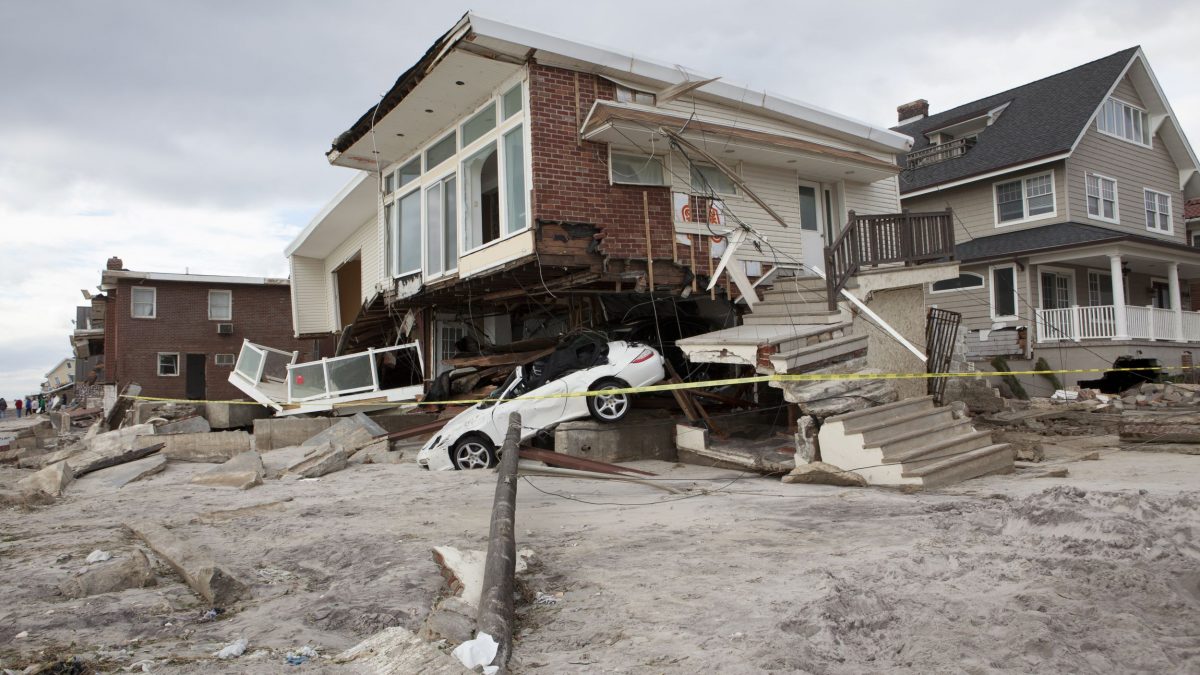WATER WATER EVERYWHERE: WHAT WILL THE COMING YEARS MEAN FOR YOUR HOME?

RISK MANAGEMENT—REPLACEMENT COST VS. REBUILD COST
June 22, 2021
DON’T FALL FOR CYBERSCAMS— PROTECT YOU, YOUR FAMILY, AND YOUR BUSINESS
November 4, 2021Recent FEMA data have shown that 98% of all U.S. counties have experienced some sort of flooding event, and that floods have racked up a total of $155 billion in property damage nationwide. With weather and climate trends pointing to a wetter and more erratic future, it’s time to ask how these trends will affect our home, and your homeowner’s insurance.
Weather Trends—Who Is Most at Risk?
A study by the First Street Foundation, a nonprofit research group, found that r\ight now, 4.3 million American homes stand in locations with a significant risk for flooding. Even those protected by the federal government’s National Flood Insurance Program are not without risk, as flood losses can easily outstrip members’ annual NFIP premiums.
According to the study, in the United States, all properties with flood risk face an estimated $20 billion in damage due to flooding each year. Properties along coastal regions are at the greatest risk for flooding. Florida, California, the Gulf Coast and the Northeast are all susceptible to major flooding events. The NFIP is currently operating with a $20 Billion debt. In 2017, Congress relieved the agency of $16 billion to allow coverage for damage caused by named storms Harvey, Irma, and Maria.
To complicate issues, NFIP rates have changed little over the past several decades. The climate has dramatically altered weather patterns during that time. To address the issue, FEMA is currently at work creating new and more accurate flood zone maps of the nation, and these
should more accurately reflect the new flood risks that accompany climate change. FEMA is expected to introduce a new approach to flood insurance rates later this year called “Risk Rating 2.0,” which aims to better define the risk for each individual property. The idea is for the agency to operate more like a private insurer. While the revamp is expected to help, it places private insurers in direct competition with FEMA. And by 2050, hundreds of thousands of homes could be directly affected by sea level rise.
Is Flood Insurance Required?
Flood insurance is required if you have a federal mortgage that’s backed by the government (like Fannie Mae or Freddie Mac), and your home is located in a Special Flood Hazard Area. This usually means your home is in a high-risk flood zone with a 1% chance or more of flooding (referred to as a 100-year flood zone). Some private mortgage lenders also require flood insurance if you’re in a high-risk flood zone. Some lenders may always require flood insurance, based on the terms of your loan.
What Can You Do to Avoid Catastrophe?
As the weather becomes increasingly unmanageable, it’s imperative that individual homeowners take a greater role in managing that risk. Chances are, you already have some sort of flood protection—but is it enough? If you own your home and are paying a mortgage, you are required to have certain basic flood insurance, equal to property development costs or the coverage maximum, whichever is lowest. It’s recommended, however, that your home be insured for its full value, as well as the value of any possessions it contains. Coverage from the NFIP does not often exceed $250,000 for your home’s structure and $100,000 for your personal property, so if you have a high-value property, you may be underinsured.
If you live in a flood-prone area, think about the true replacement costs of your home and possessions in the event of a major flood. For example, you may ask, what would a full rebuild cost, given the prices of construction materials in our area? Or what is the true replacement value of your personal possessions?
If you’re purchasing a new home, it may be prudent to ask a few questions about the area’s flooding history, the drainage plan for the community in which you’re buying, and even the climate and rain predictions for the coming years.
It’s also important to note that incidental expenses are not covered by NFIP flood insurance. So if your home is rendered uninhabitable and you must seek temporary shelter such as a hotel, those costs must come out of your pocket. Private insurers, on the other hand, often provide some compensation for relocation expenses (though individual policies vary.
And finally, NFIP limits compensation for damaged or lost possessions, so if you own high-value property such as jewelry, antiques, collectible vintage cars or the like, you may want to consider adding a rider to your flood insurance policy to protect these assets fully.
A Flood Insurance Checklist
Despite bleak climate and weather predictions, there are some actions you can take to help minimize the chances that you’ll be underinsured in the event of a major flooding event.
• Check your current flood insurance policy. Are you covered for the full replacement value of your home and possessions?
• Shop around. Compare coverage between NFIP and private insurers to get the best rates, the most coverage, and the lowest premiums.
• Buying a new construction—do your research. Before you buy a new home, check the area’s flood history and drainage provisions.
• Add a rider to your policy, especially if you own expensive or collectible possessions that will be difficult to replace.
• Prepare for relocation expenses. If you have a private insurer, these may be covered, at least in part.
At MAGIS, we understand how hard you’ve worked to attain your current assets. Don’t risk your possessions to flood loss. We’ll work with you to ensure that you get the best coverage available at rates that won’t break the bank. Contact a MAGIS representative today and discover how peace of mind feels.




